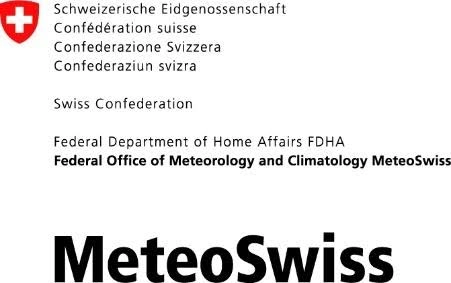MeteoSwiss and bespinian Modernize Specialized Applications in the RZ+ Project

"With the help of bespinian, we are successfully modernizing our specialized applications and seamlessly integrating them into a geo-redundant cloud infrastructure."
Andrin Rüedi, Head Program, MeteoSwiss
Customer
On behalf of the Swiss government, MeteoSwiss is fulfilling the tasks outlined in the Federal Act on Meteorology and Climatology. The experts at MeteoSwiss operate the national ground- and radar-based measurement networks, collect, manage, and analyze weather and climate data. They provide forecasts, warnings, and advisory services while engaging in research and development of tailored products and services.
Background
As the national weather service, MeteoSwiss operates more than 300 specialized applications, scripts, and services developed and maintained by various teams using agile methodologies. These create a complex and heterogeneous landscape of interconnected software components and services. Some of these applications are responsible for critical safety tasks (e.g., the calculation of aviation weather data), while others handle large volumes of data (e.g., weather data from measurement stations). The combination of these responsibilities imposes stringent requirements for high availability and resilience.
Project Goal
In this collaborative project, the aim is to modernize this complex collection of critical data, specialized applications, and automation solutions, make it geo-redundant, and migrate it to the cloud (primarily AWS and the Swiss National Supercomputing Centre, CSCS). Some components, which are already containerized, can be easily deployed on serverless platforms. Others, running on traditional VM-based infrastructure, need significant modernization before being operational on AWS.
bespinian's Role
bespinian played a key role in the following areas:
Architectural Workshops with Customer Teams
bespinian's cloud-native experts proactively conduct architectural workshops with various specialized teams to define the target architecture on AWS. Together with the teams, suitable AWS technologies are identified, and plans are devised to connect them to the existing network infrastructure. This process provides the teams with clear goals and a step-by-step plan to achieve them. The conception and implementation follow DevOps and GitOps principles.
Migration of Existing Applications to AWS
Following the architectural workshops and the definition of the target architecture, bespinian supports the teams in executing the migration. AWS resources are defined as Terraform modules and provisioned automatically using Terraform Cloud. Application code (mostly Java and Python) is modernized, and integration and deployment are automated via GitOps (using Jenkins and GitLab). This close collaboration facilitates timely modernization while also building knowledge and expertise within the client’s teams. The applications are highly diverse, ranging from simple scripts to web applications, machine learning pipelines, and IoT platforms. Most applications are implemented using AWS serverless services (Lambda, Batch, Step Functions) in an event-driven architecture with highly available AWS products (e.g., DynamoDB, SageMaker, CloudFront, S3, CloudWatch, Aurora, etc.).
Provisioning of Central Components and Processes
During the initial migrations, bespinian provides central building blocks and processes to optimize future migrations and establish best practices. Reusable Terraform modules are developed to provision AWS resources (e.g., Lambda functions and S3 buckets) according to best practices. Guidelines are created for cloud-based software development, covering topics such as logging, monitoring, and tracing. These measures ensure the long-term maintainability of the migrated applications. A GitOps workflow was defined to deploy and operate applications via Git. This workflow was implemented for initial applications and will be used as a standard for all subsequent migrations.
Containerization of Legacy Applications
Certain applications are not suitable for direct migration to AWS or are more cost-effective to operate at CSCS. In these cases, bespinian supports the client’s teams in containerizing these applications and setting up Kubernetes resources. Dockerfiles and Kubernetes resource definitions are created, which are then automatically deployed and managed on MeteoSwiss’ internal OpenShift platform or at CSCS.
Network Setup and Architecture
MeteoSwiss’ network architecture is highly complex. The three main locations to be connected include the on-site infrastructure in Kloten and other locations, the CSCS in Lugano, and AWS data centers. In AWS, the Zurich (eu-central-2) and Frankfurt (eu-central-1) regions are primarily used. This results in a hybrid cloud setup capable of processing large data volumes efficiently and bidirectionally. bespinian plays a key role in designing and implementing this infrastructure, together with our strategic partner Nuvibit, who is designing and implementing the underlying AWS platform and networking layer based on NTC.
Technologies
- AWS
- Swiss National Supercomputing Centre (CSCS)
- Terraform
- Nuvibit Terraform Collection (NTC)
- OpenShift / Kubernetes
- Jenkins
- GitLab
- Java
- Python